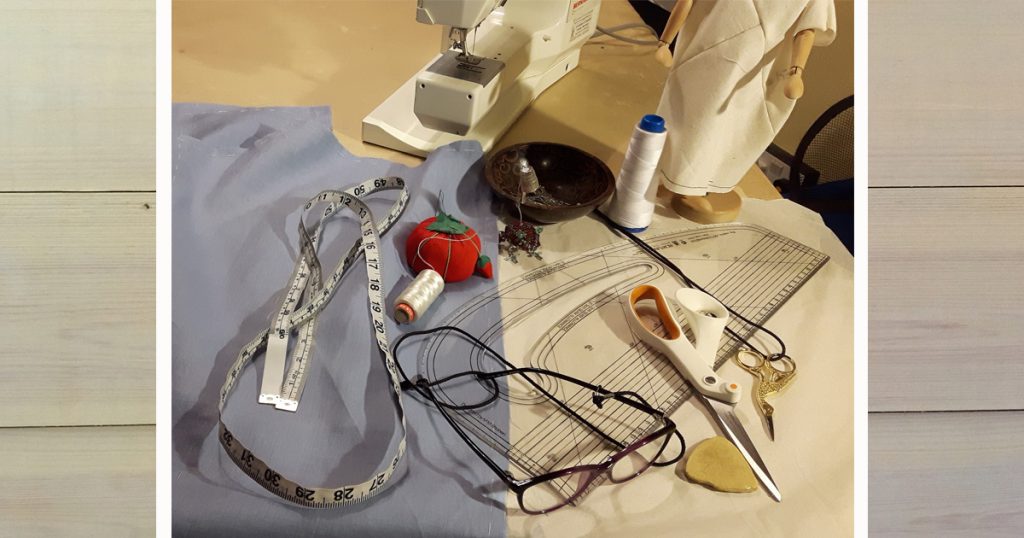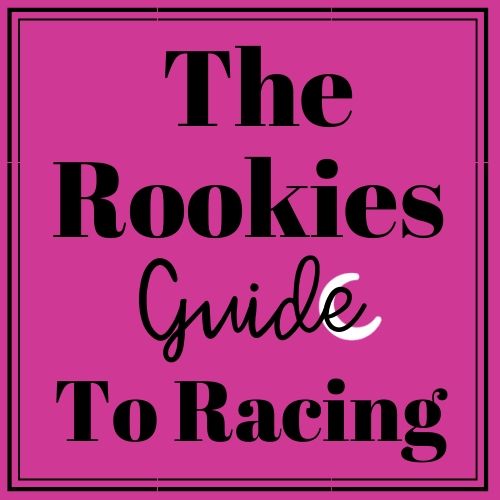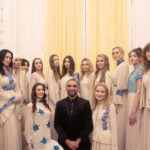Haute Couture means ‘sewing at a high level’; Couture means ‘sewing’.
In France the terminology Haute Couture is controlled by the Chambre Syndicale de la Couture Parisienne (Parisian High Fashion Syndicate); it is the governing body of French fashion houses. The Chambre Syndicale has strict guidelines for the usage of the wording Haute Couture, one of which involves having a workroom in Paris, employing at least 20 full time workers, alongside presenting a collection of at least 75 styles twice a year.
I am approaching this subject matter as a two-part series as I would like to acknowledge the unsung heroes and heroines who work behind the scenes in both an Haute Couture, and a Couture house; in some couture establishments these can be sole traders who have private clientele and are not known to the general public.
There are those to whom the thought of spending £10,000–£150,000 plus for a garment is viewed as obscene, but is this more or less comparable to a Supercar at £250,000 or a piece of artwork that runs into millions? They all have in common one element that in some industries is celebrated and others ignored, that is ‘skill’ – years of practice, perfection and going back to the drawing board. And I do know that ‘fast throwaway fashion’ does not help to champion hand-sewing skills.
A good example as to the importance of Couture is Lady Diana’s Couture dresses which sold for significant sums at auction. Her iconic status aside, these garments were exquisite: many hands crafted these wonderful pieces.
Fashion museums exhibit garment pieces not only for their historical reference but also for the craftsmanship/craftswomanship (I’ve often wondered about this word from a position of gender, which is why I have presented both)! Anyway I digress, back to the why behind the ££££££’s sign.
It has been said time and again that Couture is an industry on its last legs, a statement I totally disagree with. Whilst it may not be as exhilarating as it was during its original heyday at the royal court, starting with Charles Frederick Worth who is historically recorded as the father of Couture, it is still relevant today, and I feel always will be.
It’s an industry that employs thousands whose skills should be celebrated and passed onto future generations; technology is great for showing our evolution, it has its place; however, to replace skilled hand craftsmanship with that of automation is to miss out on how creative we are. Not to mention its therapeutic value – it has been noted that the more we work with our hands to create, the more harmony we create internally, especially when working to the best of one’s ability.
The conception of a designer’s vision must go through methods of practice before becoming an item of clothing that is admired. The patternmaker whose job it is to translate a sketch, or draped form into workable pattern pieces for the seamstress to make is the beginning of the process. A client’s measurements are also taken to make a prototype of the design. (In some ateliers a client may even have a personal dress form, padded and covered in muslin – the best way I would describe this, is to think of paper mache sculptured to your body shape, a personal mannequin of you.)
This prototype or calico toile of the design is made up by a seamstress and then fitted to your body – this step maybe carried out by a fitter. The fitter’s role is to make sure the garment is flattering to you, it’s only at this stage that you can see what suits you. Does the neckline suit your face, is the length acceptable; it’s a detailed process, in which you can be pinned, and gently pulled. After all of this the garment is then ripped apart, all the adjustments noted, and the team must now go back to the original pattern to reflect the changes. Sometimes, depending on the extent of the changes, another toile will be made, there can be as many as three toiles in some instances. Think of the hours of labour that have already been consumed; I’ve spoken about four individuals including the designer, they all need to be paid.
The client whilst on this journey will witness how balance and symmetry is created intuitively, years of practice replace the rule books of pattern design and fit which can only take you so far. Through having a discerning eye for detail these craftspeople are responsible for optical illusions that are appealing to your bodyshape.
In part 2 of this story, I will take you further into the atelier’s studio as the designer works alongside these very talented and skilled individuals.

Coral Turner is a couture designer based in London. Specialising in unique ready-to-wear Race Day Fashion, her emphasis is focused on the way clothes make you feel. In addition a dressmaking service is also available. “My dresses are just like you… one of a kind.” See her website at https://coralturner.com








